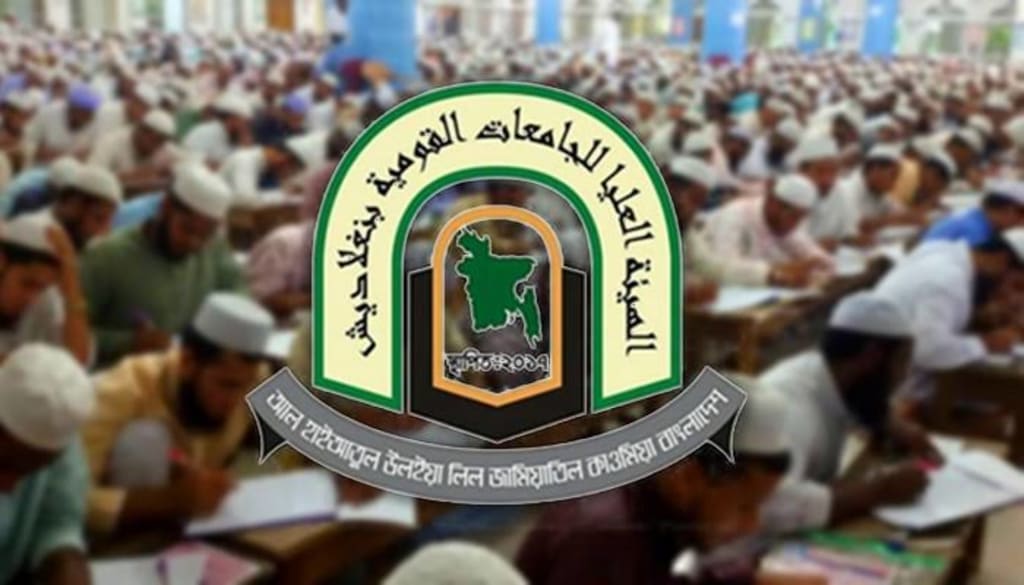
### A Comprehensive History of Qawmi Madrasas in Bangladesh
#### Preserving Tradition, Shaping Education, and Influencing Society
**Introduction:**
Qawmi Madrasas in Bangladesh have long been integral to the nation's religious and educational landscape. Rooted in centuries-old Islamic traditions, these institutions have played multifaceted roles in shaping religious scholarship, societal norms, and political discourse. This comprehensive history aims to trace the evolution of Qawmi Madrasas in Bangladesh, from their inception to their contemporary significance, exploring their cultural, educational, and socio-political impact along the way.
**Early Origins and Development:**
The roots of Qawmi Madrasas in Bangladesh can be traced back to the spread of Islam in the Indian subcontinent, particularly during the Mughal era. Islamic scholars and teachers established these madrasas as centers of religious learning, often focusing on traditional Islamic sciences such as Quranic studies, Hadith, Fiqh (jurisprudence), and Arabic language.
**Colonial Era Influence:**
During British colonial rule, madrasas faced varying degrees of regulation and patronage. While some madrasas received state support and recognition, others operated independently, maintaining their traditional curriculum and autonomy. The colonial period witnessed a proliferation of madrasas across Bengal, serving as hubs for religious education and cultural preservation.
**Post-Independence Resurgence:**
Following Bangladesh's independence in 1971, Qawmi Madrasas experienced a resurgence in popularity and influence. With the government's recognition of Qawmi certificates as equivalent to secular education qualifications, these institutions gained legitimacy and expanded their reach. Many students, particularly from rural areas, sought education in Qawmi Madrasas due to their accessibility and emphasis on Islamic teachings.
**Educational Curriculum and Methodology:**
The curriculum of Qawmi Madrasas typically revolves around the memorization and interpretation of religious texts, with an emphasis on classical Islamic scholarship. Students undergo rigorous study of the Quran, Hadith literature, Islamic jurisprudence, theology, and Arabic grammar. The traditional pedagogical approach involves teacher-centered instruction, rote memorization, and oral examinations.
**Role in Religious Scholarship:**
Qawmi Madrasas have served as incubators for religious scholarship, producing generations of Islamic clerics, scholars, and leaders. Graduates often go on to become Imams, Muftis, or teachers in mosques and madrasas, disseminating Islamic knowledge and guiding community members in matters of faith and jurisprudence.
**Social and Cultural Influence:**
Beyond their educational function, Qawmi Madrasas play a significant role in shaping social and cultural norms within Bangladeshi society. They serve as centers for community engagement, religious rituals, and moral guidance. The cultural heritage embedded in these institutions fosters a sense of identity and belonging among students and alumni.
**Political Dynamics and Controversies:**
The relationship between Qawmi Madrasas and the state has been a subject of debate and contention. While some governments have sought to integrate these institutions into the national education system, others have viewed them with suspicion, citing concerns over radicalization and ideological extremism. Political factors often influence the regulation, funding, and oversight of Qawmi Madrasas, leading to tensions between religious autonomy and state control.
**Modernization and Challenges:**
In recent years, Qawmi Madrasas have grappled with the pressures of modernization and globalization. Efforts to update curricula, incorporate secular subjects, and adopt modern teaching methods have been met with resistance from traditionalists wary of diluting religious teachings. Additionally, Qawmi Madrasas face challenges in adapting to technological advancements and addressing socio-economic disparities among students.
**Reforms and Innovations:**
Despite these challenges, there have been initiatives to reform and modernize Qawmi Madrasas, both from within the institutions and from governmental and non-governmental organizations. Advocates for reform emphasize the importance of a balanced curriculum that combines religious education with practical skills and critical thinking. Innovations such as online learning platforms and vocational training programs aim to enhance the relevance and effectiveness of Qawmi education in a rapidly changing world.
**Conclusion:**
Qawmi Madrasas continue to occupy a unique position in the educational landscape of Bangladesh, embodying centuries of Islamic tradition while grappling with the demands of contemporary society. As agents of religious scholarship, cultural preservation, and social cohesion, these institutions remain central to the fabric of Bangladeshi identity, navigating the complex interplay of tradition, modernity, and societal change.






Comments
There are no comments for this story
Be the first to respond and start the conversation.